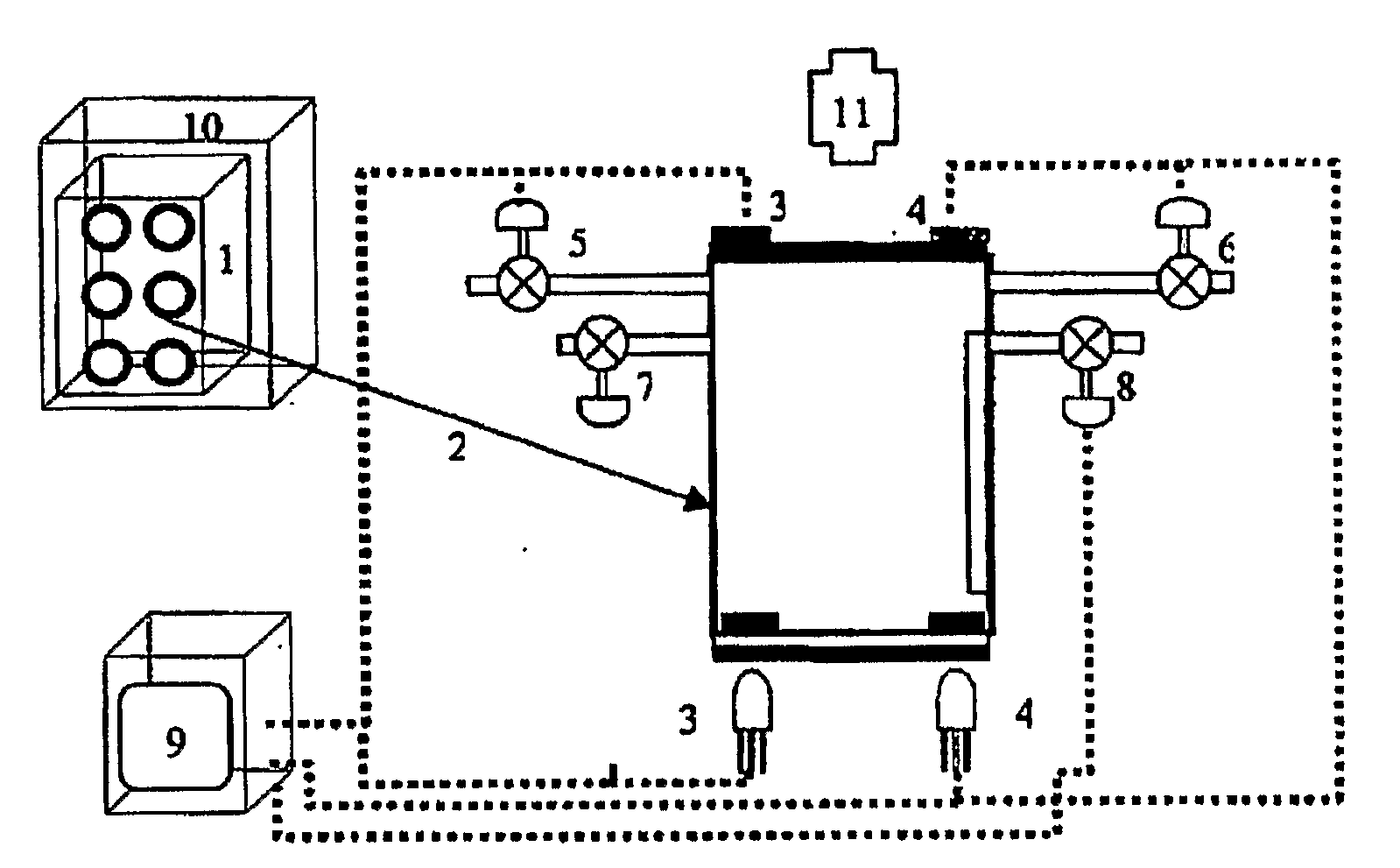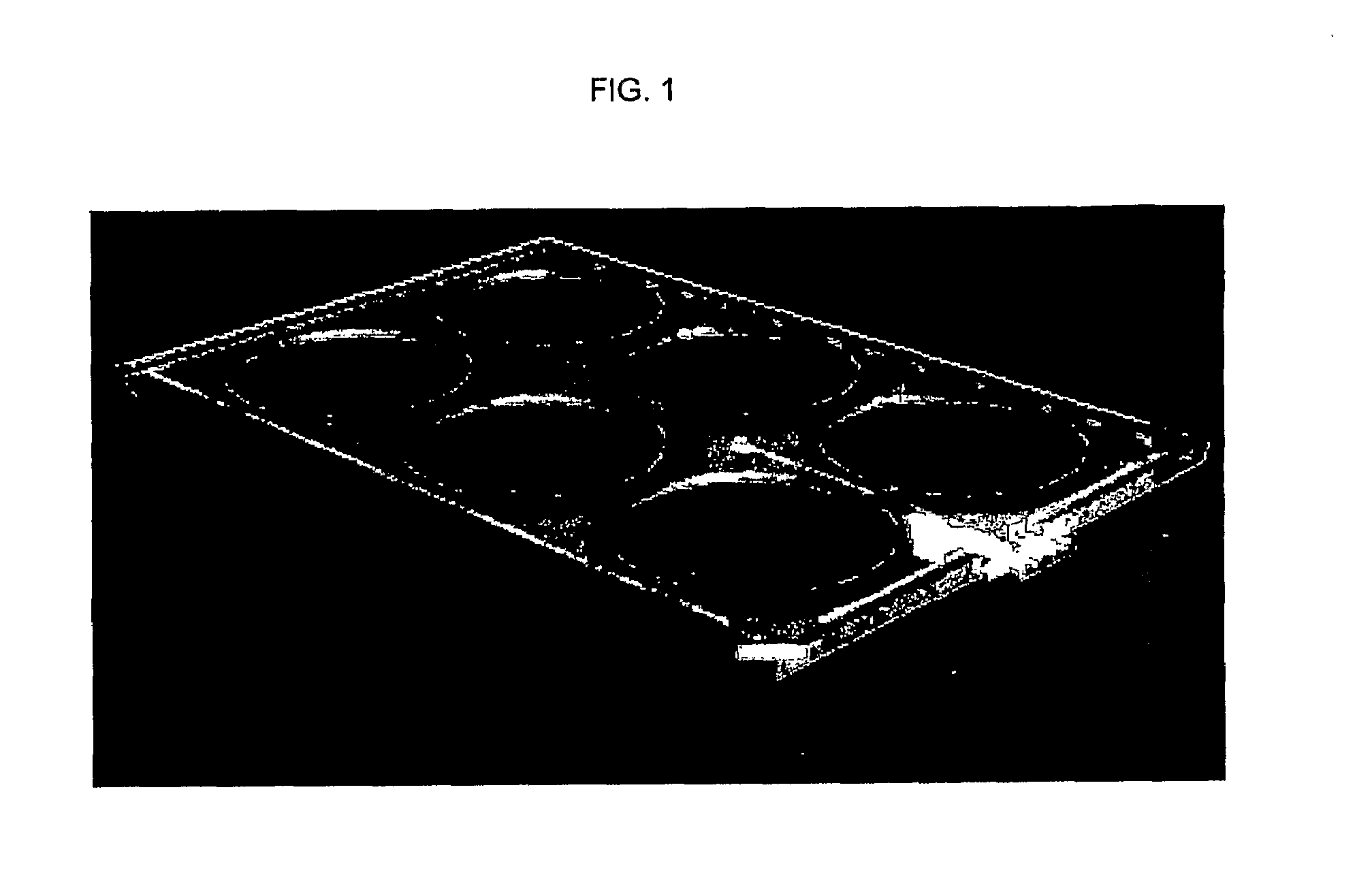Temperature-regulated culture plates
a culture plate and temperature regulation technology, applied in the field of multi-well tissue culture assembly, can solve the problems of exposing exposing the chamber to contamination, and exposing the cells or tissues to stress
- Summary
- Abstract
- Description
- Claims
- Application Information
AI Technical Summary
Benefits of technology
Problems solved by technology
Method used
Image
Examples
examples
[0156]One variation of a multi-well smart plate (or slide) is described below. In this example, a multi-well slide comprises a 6-well slide that is SBS compliant, having dimensions 5.0″×3.3″. This plate is connected to a fluid controller (that has dimensions 12.00″L×12.00″W×3.5″ H) and an electronic controller (having dimensions 5.5″ W×12.00″D×12.00″H). The plate also includes a micro-heater as described above, capable of regulating the temperature between about 30° C.-50° C.±0.10° C. The plate includes a heated lid. The heated lid also regulates temperature between about 30° C.-50° C.±0.10° C. The system may also include a microscope objective lens heater that controls the temperature of the objective (e.g., oil or water) over the same range of temperatures (30° C.-50° C.±0.10° C. ). A power supply (e.g., 12V / 10 W) is readily attachable to the plate (e.g., base and lid, or objective heater) for powering the heater(s). Finally, where gasses like CO2 will be supplied to the plate, th...
example 2
[0159]A proof-of-concept experiment was done comparing an incubator using a standard (e.g., passive) multi-well plate with a smart multi-well plates as described herein, in which temperature and CO2 / O2 were regulated on-plate. Researchers at University of Southern California in the Keck School of Medicine use the development of chicken skin appendages as a model for organogenesis (see references 1 and 2). Embryonic skin explants are monitored for the appearance of dermal condensations seen as dark circles on the skin. These researchers study the signal process between the dermis and the epithelium that leads to the fundamental organization of periodic patterning for feather development. In a recent experiment, one variation of a 6-well smart slide was used to monitor dermal condensations in chicken skin cultures.
[0160]Materials and Methods: Embryonic day 6.5 skin explants were grown in HEPES buffer (10 uM) with Dulbecco's Modified Eagle's Medium (DMEM) supplemented w...
example 3
Smart Plate
[0167]FIG. 3 shows another variation of a smart multi-well plate in which a number of sensors are included. In FIG. 3, the plate 1 is shown as a six-well plate, wherein each well 2 is an inner diameter of 35 mm and a depth of 19 mm. A single well is shown schematically in cross-section (indicated by the arrow 2). This well includes a cover and four ports passing through the wall for applying or withdrawing fluids (e.g., media, gasses, drugs) to or from the well. For example, a NaOH μ-pump (which may operate at 160 nL / pulse) may be connected to one port, which is controlled by a valve 5. An gas supply (e.g., O2 supply) may be connected to a second port 6. Media my be applied through a feeder port 7, and samples of media (or excess media) may be removed through the sample port 8.
[0168]Each well of the example shown in FIG. 3 may also include sensors for detecting characteristics of the environment within the well. For example, the well includes a pH Sensor 3, and a dissolve...
PUM
| Property | Measurement | Unit |
|---|---|---|
| volume | aaaaa | aaaaa |
| thick | aaaaa | aaaaa |
| height | aaaaa | aaaaa |
Abstract
Description
Claims
Application Information
 Login to View More
Login to View More - R&D
- Intellectual Property
- Life Sciences
- Materials
- Tech Scout
- Unparalleled Data Quality
- Higher Quality Content
- 60% Fewer Hallucinations
Browse by: Latest US Patents, China's latest patents, Technical Efficacy Thesaurus, Application Domain, Technology Topic, Popular Technical Reports.
© 2025 PatSnap. All rights reserved.Legal|Privacy policy|Modern Slavery Act Transparency Statement|Sitemap|About US| Contact US: help@patsnap.com



